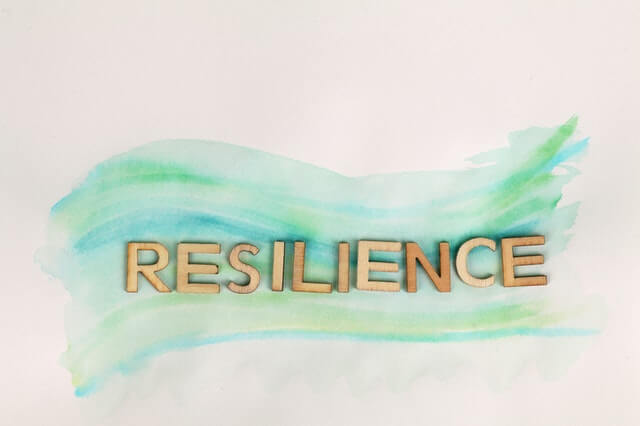What does resilience mean to you? In this post, I share what resilience means to me and how I coach clients to cultivate resilience to meet challenges when the unexpected happens.
I just finished reading Option B, a book that Sheryl Sandberg wrote with psychologist Adam Grant after the heartbreaking death of her husband, Dave. Together with Adam, Sheryl tells her personal story of loss and grief, offers stories from the lives of others, and shares advice on how to cultivate resilience. The book’s title is inspired by something a family friend said to her in the aftermath of Dave’s death. In a particularly poignant passage, Sheryl shares the story of how she needed someone to fill in for Dave at a father-child activity. She cried, “But, I want Dave.” Her friend held her and said, “Option A is not available, so let’s kick the sh*t out of Option B.”
What Resilience Means to Me
The book made me think about my own resilience cultivation practice, and how I coach clients to build theirs. I realized that Option B is so much easier to work with when we’re able to let go of Option A. It’s not enough just to accept that Option A is no longer available; we have to release it along with any values and beliefs we’ve also invested in Option A’s plan.
Granted, I frequently struggle with this and see clients wrestle with it, too. That’s because Option A is likely the most attractive, cost-effective, convenient, or efficient choice to exercise. As a result, we invest time and resources in its implementation. Perhaps more importantly and powerfully, we invest our hearts. This is what we want, what we believe is best, and we’ve likely recruited others to join us in our beliefs.
We’re in deep.
I don’t know about you, but when I’m deeply invested in something, the idea of moving on is tough, even if you tell or show me that I have to…even if the reason for moving on is compelling and inarguable. I don’t want to let go. I want Option A.
To cultivate resilience, we must be willing to face and deal with feelings associated with loss or disappointment. It’s common for people to skip this “letting go” part because it can feel lousy. But it’s critical because it frees up the energy and space we need to move on and re-invest resources into a new option.
William Bridges, author of Managing Transitions, argues that the change process can be accelerated if there’s time and attention paid to letting go. What’s true for managing change is also true for accepting that some things aren’t going to go as planned. So, before you can really make the most of Option B, you must clear the decks of Option A. That doesn’t mean erasing it completely – it just means making time to process loss, feel disappointment, and, in some cases, grieve. Unless we do, we’re likely to hold on to resentment or frustration, which is kryptonite to Option B. We can’t kick the sh*t out of an option that we can’t even get close to.
What does resilience mean to you?
I want to end this post with some advice and something to think about as you continue your professional journey. What does resilience mean to you? What does it mean to practice resilience in your personal and professional life?
To cultivate resilience, it’s critical to have a plan of action. When faced with adopting something new or making a less-than-popular change:
- Meet with teammates to share feelings and concerns.
- Brainstorm the benefits of moving on.
- Give yourself and each other a little extra grace as you transition your attention from something to which you’ve invested a lot.
Letting go is a worthy investment of time so you can more easily step into a new reality.
